Feeding Baby Rabbits
Feeding baby rabbits falls mostly to the mother rabbit for the first 3 weeks of the bunny’s life. Between 3 weeks and around 6 weeks old, the baby rabbits need less and less of mom, and more and more pellets and hay.
At the point they no longer "need" the mother for food, they are said to be weaned. This physiological point arrives almost precisely at 4 weeks of age, at least in regards to the operative word "need." This means that a kit orphaned for some reason at 3.5 - 4 weeks old can go straight to solids, and will not need supplemental milk unless it happens to also be malnourished.
In our domestic rabbits, however, the doe permits her kits to keep right on nursing, simply because she can physically afford to do so. The typical litter of bunnies in your home or hutch can be 6-7 weeks of age, possibly older, by the time their mums forbid any more nursing.
See our Raising
Baby Rabbits page for more detail on the normal care of bunnies from 2 weeks of age and older, including the processes of weaning the litter.
What do you do if something catastrophic happens to the doe?
Every once in a while tragedy strikes. The doe could develop young doe syndrome. You’d find her suddenly dead in her cage, with her kits being just a week or 10 days old. Or, the doe could develop mastitis, refuse to nurse the kits because of the pain, or herself die from bacterial toxins.
(For more information on MASTITIS, we have a great article in our October 2021 issue of Rabbit Rhythms.)
Whatever the disaster, feeding baby rabbits now falls to the rabbit owner.
What you do will likely depend on how old the kits are. Obviously, the older, the better the survival rate.

Our book, the Rabbit Raising Problem Solver is a great paperback with questions and answers for everything you need to know about bunny, from health to housing. What does it cover?
- Diseases and how to treat them
- Injuries and how to treat them
- Behavior
- Diet
- Breeding
- Care of babies and mamas
- Housing
- And lots more!
******Testimonial: the index in back is a life saver. It has everything! Any time I need to know something, I flip to the index in back and it takes me straight there. This is so much better than trying to get through an online search engine that gives you a ton of results that are just selling unrelated junk. This book is also written for real people, and not filled with a bunch of technical jargon that you don't know if you aren't a vet. I love this thing! Gina, Washington state, July 2020.******
If you would like an autographed book for only $22.42, CLICK HERE TO BUY NOW.
Can you foster the baby rabbits to another doe?
Between the age of 0 to about a week, fostering is
fairly easy, especially if the kits are within a couple days of the age of the
foster-mother’s kits. Just slip the
babies into the new doe’s nest. Do it in
the morning, and rub their little bodies gently with the new doe’s fur in order
to transfer her smell to them.
As you replace the nestbox, give the new doe a generous helping of calf manna, whole oats, or a favorite treat, in order to distract her. She’ll think everything is fine, and by evening, all the kits should smell like they belong in the nest. If you’re still nervous about the doe, just leave the nestbox outside the nest all day, and then put it back in with the doe about suppertime.
The foster doe will do a much better job at feeding baby rabbits than you could, if you don’t overwhelm the new doe with a dozen bunnies. How many kits you give her may depend on her ability to make the additional milk. Adding a source of fats and extra nutrition with oats and black oil sunflower seeds, will definitely help her augment her milk supply. Our Bunny Branola is a great daily supplement for nursing does, especially if they are doing double duty!
Bunny Branola - Ultimate Rabbit Nutritional Supplement, and Treat!
What bunny doesn't love Bunny Bran??!
1 Tablespoon per day of our tasty and nutritious snack mix
sprinkled on their regular food is all your bunny needs to be happier and healthier.
- Bunny Branola makes fur softer and shinier, teeth and tummies healthier, and helps relieve stress due to things like barking dogs, new situations, or ultra cold winters.
- Bunny Branola is a wonderful rabbit superfood supplement for pregnant bunnies and growing bunnies.
Rabbit Condition Enhancers: BOSS, Whole Oats
No does to foster the kits to?
You can attempt bottlefeeding. Here’s some tips and techniques, depending on the age of the orphaned kits.
But first, a sober head’s up: Without careful attention to the bunnies' dietary needs, the survival rate for bottle-fed infant bunnies can be as low as 0 - 10%, especially if the babies are orphaned before their eyes open. That means 9 out of 10 (or worse) often don’t survive. There are a number of reasons bunnies fail to survive without their mums. Here are the most common reasons:
- Incorrect formula
- Milk gets into the lungs and causes pneumonia
- They don’t get enough antibodies from their mother
and die from infection
- The kits get a fatal diarrhea. Their intestinal bacteria population is quite
sensitive. Until they start eating solids, their guts are actually sterile. But the formula is not sterile, nor should it
be. So if you start introducing unnatural bacteria to the guts too soon, before
the normal bacteria have started populating the gut, the kit gets severe
enterotoxemia and dies. This is probably
the most frequent cause of death in rabbits orphaned in their first week of
life.
- The bunnies don’t get enough nutrition, or too
much at once.
- The bunny fails to urinate or defecate with each feeding, and the bladder over-fills and bursts. The doe licks her kits’ bottoms as they nurse, so the rabbit-raiser needs to not overlook this little detail of rabbit-motherhood. You can use a wet finger, or a soft moistened tissue. Make motions as the doe would, like you’re cleaning the bunny’s privates. It might take a few minutes, at least at first, until you get the desired response. I’ll tell you this - that little stream of urine can shoot out a good four feet!
Easy to use nursing bottle, recommended Esbilac milk replacements:
Compare prices and sizes on Chewy.com
Compare:
Here are some other options for feeding kits:
Other powders and supplements we recommend:
Proven Guidelines for Feeding
Baby Rabbits
Lou Rea Kenyon, a registered nurse and a licensed wildlife rehabilitation expert, has successfully saved bunny-lives for over 17 years. She is the owner of Nutkin’s Nest Wildlife Rehabilitation Center. <--Check out their Facebook.
This is where we would send you directly to her wild-cottontail-feeding
protocols, however her website has disappeared from the web.
With her permission however, we summarized Ms. Kenyon's
instructions on our Feeding
Wild Rabbits page, because her instructions for feeding
baby rabbits work for both cottontails and orphan domestic rabbit bunnies.
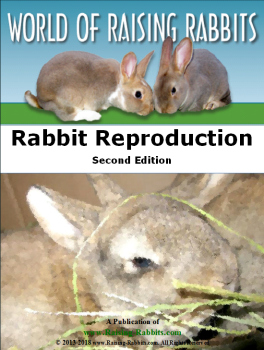
If you want to know anything about how big rabbits make little rabbits, check out our ebook:
Rabbit Reproduction, 2nd Edition
(We made it bigger and better!)
Rabbit reproduction is on every rabbit owners mind because they breed like rabbits! This book has everything you need to know from the first thump of love until the babies grow up and are ready to have little ones of their own. It answers lots of important questions like:
- Is my rabbit pregnant?
- Why isn't my rabbit pregnant?
- What will she do?
- What should I do for her?
- How do I know the babies are ok?
- What should I do if there is a problem?
- Who should eat what, and when?
The book has loads of pictures, so you know exactly what you're seeing and what to look for.
2023 is the Year of the Rabbit, so all of our ebooks are 30% off!
Get Rabbit Reproduction 2e for $9.99 $6.99! <----Click to buy now!
Rabbit Milk Replacement Suggestions
We recommend Goat's Milk Esbilac, or Esbilac Milk Replacer for Puppies. Whatever formula you use to hand-feed bunnies, it will still need the addition of fat. The easiest way to do this is to use heavy cream.
Bene-Bac (or healthy cecotropes) will be another essential ingredient of the milk formula in order to prevent fatal diarrhea.
See Feeding Wild Rabbits for the formulas and details, including some suggestions should you have been surprised by the sudden death of a doe, and not have on hand any formula.
Good luck with feeding baby rabbits!
Feeding
baby rabbits orphaned at
3 or 3.5 weeks old
By three weeks old, baby rabbits are already nibbling pellets and hay, but they still need mother's milk. They may also still be at risk for life-threatening bunny diarrhea. Nevertheless, their survival rate improves dramatically by 3.5 weeks old, even on just excellent rabbit pellets and water.
This Bunny Food is Currently the Best I Have Found:
- Besides providing pellets and alfalfa
hay, some very dry (non-moldy) bread soaked with raw, unpasteurized cow’s or
goat's milk might be a good milk substitute for feeding baby rabbits. (Raw milk
available from some dairy farms and very possibly at a nearby health food
store, depending on the state you live in). Or, soak the dry bread in Kitten
Milk Replacer (KMR). Offer this to the kits.
- If you can get them to take it, great. Otherwise, supplement with bottle feedings
once a day for a week or so.
- Some young bunnies can learn to drink formula from
a bowl. Don't leave a bowl of bunny-milk in the cage for more than 1/2 hour,
lest they walk in it and contaminate it with droppings.
- By the time they’re 4 to 4 1/2 weeks old, they
will be fine on high-protein pellets (17-18% protein), an oil supplement (whole
oats, black oil sunflower seeds, or real wheat germ oil), and alfalfa or grass hay. (Alfalfa hay is good for these youngsters, being high in protein and suitable for their rapid-growth needs.)
- Always keep an eye on their rumps, to ensure they aren’t developing bunny-diarrhea. Without mama’s milk, the chance for disrupted gut bacteria is great. At the first sign, feed the bunny a slurry of formula mixed with 1-2 healthy cecotrope ‘packets’ (a single entire grape-like cluster of cecotrope). At the same time, replace all feeds with grass hay, till their rumps clear up, hopefully 24 - 72 hours. Then reintroduce their regular rabbit diet.
Click here for lots more on feeding orphan baby rabbits and cottontails
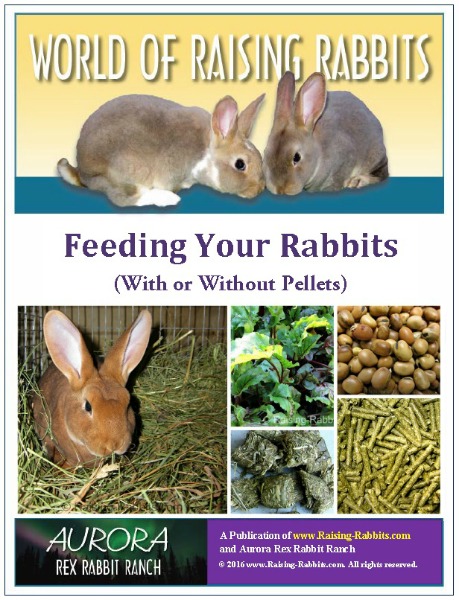
FEEDING YOUR RABBITS
Feeding Your Rabbits is our guide on everything you need to know about a healthy rabbit diet. It includes information about store pellet feed or a home forage diet so you can choose the right fare for your hare.
Feeding Your Rabbits tells you how to feed your rabbits at all stages of life, including bottle feeding newborn babies, extra nutrition for pregnant and nursing does, supplements to enhance health, and even which plants are safe, and which are safe in moderation. Feeding Your Rabbits also has information regarding rabbit digestive health and diseases. A healthy diet will ensure your rabbit lives his best life!
2023 is Year of the Rabbit!
The Lunar Calendar celebrates Bunnies this year,
and so are we:
30% Discount on All E-Books until 9 February 2024!!!
BUY NOW! Only $12.99 $8.99
To find out about all of our great books, check out our BOOKSTORE.
Your purchase is 100% Risk Free. See our Double-Value Guarantee below.
Double-Value Guarantee
Our policy is to always OVER-deliver
on value,
which is why your purchase is fully covered by our
Double-Value
Guarantee.
Go ahead - take any of our e-books for a test drive. Peruse our detailed informational and educational e-books. Examine our plans for building rabbit cages, runs, or metal or PVC hutch frames. Check out the Rabbit Husbandry info e-books.
If you aren't completely satisfied that your e-book purchase is worth at least double, triple or even quadruple the price you paid, just drop us a note within 45 days, and we'll refund you the entire cost. That's our Double-Value Guarantee.
Note: When you purchase your
e-books, they will be in PDF format, so you can download them to any device that
supports PDF format. We advise making a back-up copy to a drive or cloud
account. If the books are lost, you can also purchase another copy from Raising-Rabbits.

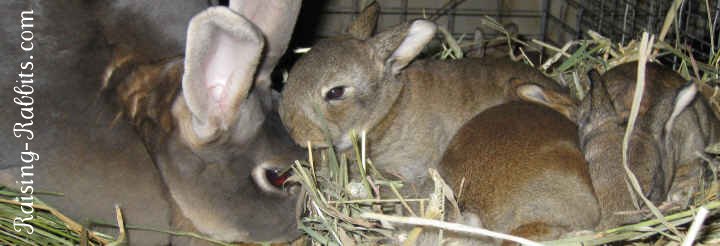
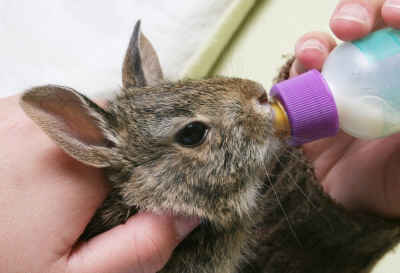




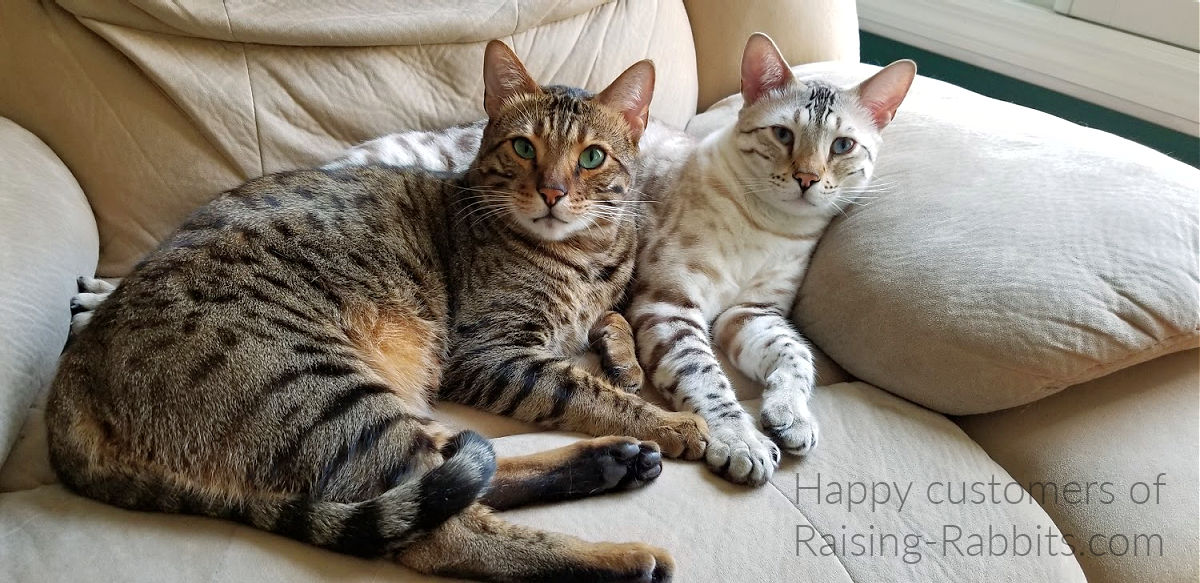


New! Comments
Have your say about what you just read! Leave me a comment in the box below.